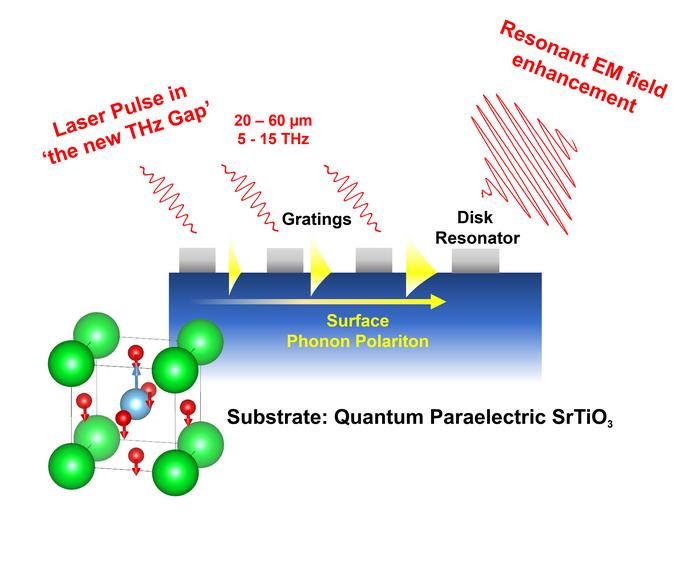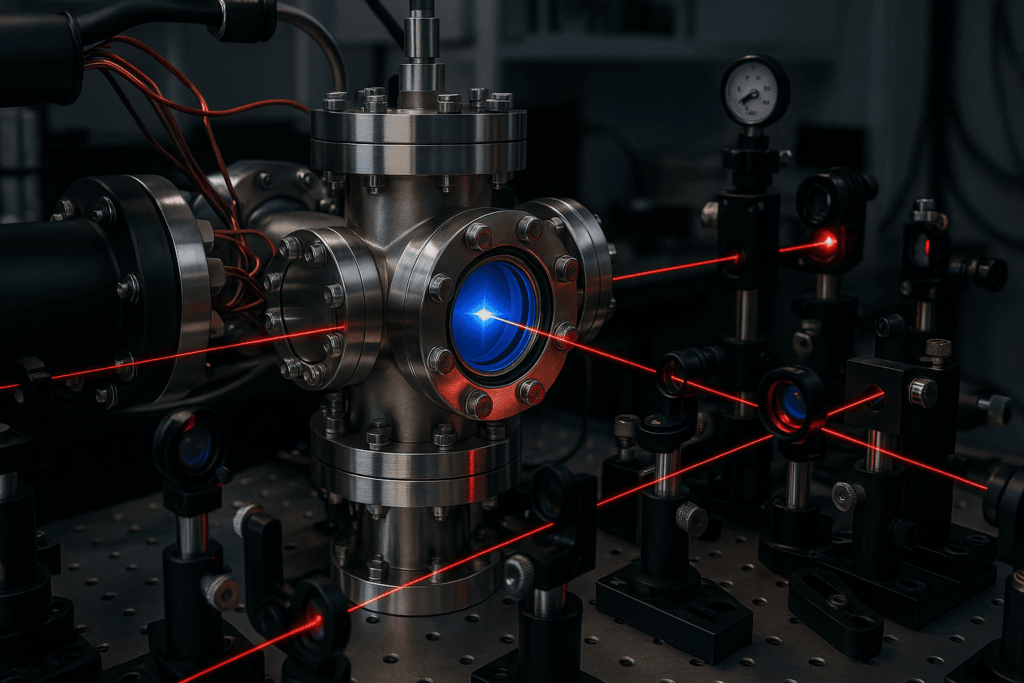Insider Brief
- Rice University researchers investigation into optical technologies in “the new terahertz gap” could lead to quantum materials that help quantum electronics operate closer to room temperature.
- The team used the strong interaction of strontium titanate to pave the way for the approach.
- The research was performed in the Emerging Quantum and Ultrafast Materials Laboratory.
- Image courtesy of Zhu lab/Rice University.
PRESS RELEASE — Visible light is a mere fraction of the electromagnetic spectrum, and the manipulation of light waves at frequencies beyond human vision has enabled such technologies as cell phones and CT scans.
Rice University researchers have a plan for leveraging a previously unused portion of the spectrum.
“There is a notable gap in mid- and far-infrared light, roughly the frequencies of 5-15 terahertz and wavelengths ranging from 20-60 micrometers, for which there are no good commercial products compared with higher optical frequencies and lower radio frequencies,” said Rui Xu, a third-year doctoral student at Rice and lead author on an article published in Advanced Materials.

The research was performed in the Emerging Quantum and Ultrafast Materials Laboratory of co-author Hanyu Zhu, William Marsh Rice Chair and assistant professor of materials science and nanoengineering.
“Optical technologies in this frequency region ⎯ sometimes called ‘the new terahertz gap’ because it is far less accessible than the rest of the 0.3-30 terahertz ‘gap’ ⎯ could be very useful for studying and developing quantum materials for quantum electronics closer to room temperature, as well as sensing functional groups in biomolecules for medical diagnosis,” Zhu said.
The challenge faced by researchers has been identifying proper materials to carry and process light in the “new terahertz gap.” Such light strongly interacts with the atomic structures of most materials and is quickly absorbed by them. Zhu’s group has turned the strong interaction to its advantage with strontium titanate, an oxide of strontium and titanium.
“Its atoms couple with terahertz light so strongly that they form new particles called phonon-polaritons, which are confined to the surface of the material and are not lost inside of it,” Xu said.
Unlike other materials that support phonon-polaritons in higher frequencies and usually in a narrow range, strontium titanate works for the entire 5-15 terahertz gap because of a property called quantum paraelectricity. Its atoms exhibit large quantum fluctuations and vibrate randomly, thus capturing light effectively without being self-trapped by the captured light, even at zero degrees Kelvin.
“We proved the concept of strontium titanate phonon-polariton devices in the frequency range of 7-13 terahertz by designing and fabricating ultrafast field concentrators,” Xu said. “The devices squeeze the light pulse into a volume smaller than the wavelength of light and maintain the short duration. Thus, we achieve a strong transient electric field of nearly a gigavolt per meter.”
The electric field is so strong that it can be used to change the materials’ structure to create new electronic properties, or to create a new nonlinear optical response from trace amounts of specific molecules which can be detected by a common optical microscope. Zhu said the design and fabrication methodology developed by his group are applicable to many commercially available materials and could enable photonic devices in the 3-19 terahertz range.
Other co-authors of the paper are Xiaotong Chen, a postdoctoral researcher in materials science and nanoengineering; Elizabeth Blackert and Tong Lin, doctoral students in materials science and nanoengineering; Jiaming Luo, a third-year doctoral student in applied physics; Alyssa Moon, now at Texas A&M University and formerly enrolled at Rice in the Nanotechnology Research Experience for Undergraduates Program; and Khalil JeBailey, a senior in materials science and nanoengineering at Rice.
The research was supported by the National Science Foundation.
For more market insights, check out our latest quantum computing news here.

















